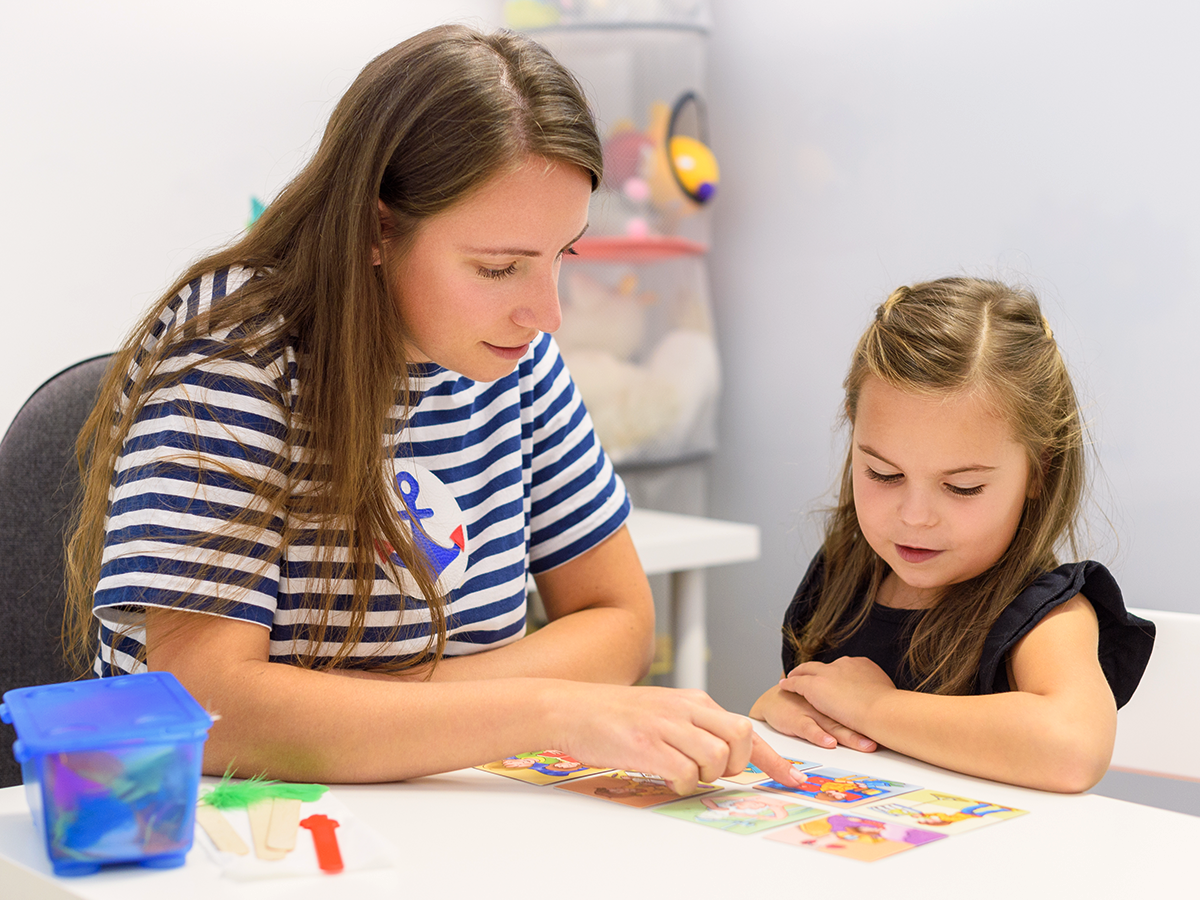Speech Therapy In Schools
Welcome to the world of speech therapy in schools! If you’ve ever wondered how students with communication difficulties receive support and guidance, you’ve come to the right place. Let’s dive in and explore the wonderful world of speech therapy in schools!
Picture this: you’re sitting in a classroom filled with classmates, but you’re struggling to express yourself clearly. Maybe you stumble on certain sounds or have trouble putting your thoughts into words. That’s where speech therapy comes in! It’s a specialized program designed to help students improve their communication skills.
Whether it’s difficulty with articulation, language development, stuttering, or any other speech-related challenges, speech therapy provides tailored techniques and exercises to bridge those gaps. In schools, speech therapists work closely with students, teachers, and parents to ensure that every child has the opportunity to communicate effectively and confidently.
So, get ready to discover how speech therapy can make a difference in the lives of students and how schools play a vital role in providing this invaluable support. Join us as we explore the fascinating journey of speech therapy in schools and uncover the magic of unlocking the power of communication!

Speech Therapy in Schools: Enhancing Communication Skills for Students
Speech therapy in schools is a crucial intervention that aims to improve communication skills in students who are experiencing challenges in speech, language, and swallowing. Through a combination of assessment, therapy, and support, speech therapists work closely with educators and families to help students overcome these difficulties and enhance their overall academic and social success. In this article, we will explore the benefits of speech therapy in schools, the importance of early intervention, and the role of speech therapists in the educational setting.
1. The Benefits of Speech Therapy in Schools
School-based speech therapy services offer numerous benefits to students, empowering them to communicate effectively and confidently. One of the key advantages is improved academic performance. When students can express themselves clearly and understand language concepts, they are better able to grasp classroom instructions, participate actively in discussions, and succeed in assignments and exams.
Additionally, speech therapy helps students develop strong social skills. Communication is at the core of building relationships, and speech therapists guide students in developing the necessary skills to interact with peers, teachers, and other individuals. They learn techniques for effective listening, turn-taking, and using appropriate language in different social contexts, fostering meaningful connections and inclusive environments.
Furthermore, speech therapy can positively impact a student’s self-esteem. When individuals struggle with speech or language difficulties, it can lead to frustration, isolation, and low self-confidence. By providing targeted therapy and support, speech therapists help students gain the skills they need to communicate effectively, boosting their self-assurance and improving their overall well-being.
2. The Importance of Early Intervention
Early intervention is a crucial component of speech therapy in schools. Identifying speech or language difficulties in children at a young age allows for prompt intervention, maximizing the chances of successful outcomes. Detecting potential issues early on enables speech therapists to intervene before these challenges impact a child’s academic performance and social interactions.
Moreover, early intervention can prevent secondary issues from arising. For example, if a child struggles with speech sounds in their early years, it may lead to difficulties with reading and writing later on. By addressing these issues in the early stages, speech therapists can prevent or minimize such complications, setting the child up for future success.
Furthermore, early intervention allows for ongoing collaboration between speech therapists, teachers, and parents. By working together, they can create a comprehensive support system for the child, sharing information, strategies, and resources to ensure consistent therapy both in school and at home. This collaborative approach maximizes the impact of speech therapy and promotes long-term progress.
3. The Role of Speech Therapists in Schools
Speech therapists play a vital role in schools, working closely with educators, parents, and students to address speech and language challenges. They conduct comprehensive assessments to identify specific difficulties and develop personalized therapy plans tailored to each student’s unique needs.
Within the school setting, speech therapists provide direct therapy sessions to students, targeting areas such as articulation, language comprehension, vocabulary development, fluency, and social communication. They utilize evidence-based techniques and innovative resources to engage students in fun and interactive activities that facilitate skill-building and progress.
In addition to direct therapy, speech therapists also collaborate with teachers to integrate speech and language goals into the classroom environment. They provide strategies and resources for educators to support students with speech difficulties in academic settings, ensuring they have the necessary accommodations and modifications to fully participate and thrive.
Moreover, speech therapists offer guidance and support to parents, equipping them with tools and techniques to reinforce speech and language skills at home. Through regular communication and collaboration, they work together to create a consistent and supportive environment for the child’s development.
The Importance of Speech Therapy in Schools: Enhancing Academic and Social Success
4. Identifying Speech and Language Difficulties in Students
Early identification of speech and language difficulties is essential for timely and effective intervention. By recognizing the signs and symptoms, educators and parents can take the necessary steps to seek professional help and support students in their speech and language development.
Signs of Speech Difficulties:
- Difficulty pronouncing certain sounds or words
- Mumbling or slurring speech
- Stuttering or other fluency issues
- Inconsistent speech patterns
Signs of Language Difficulties:
- Trouble understanding and following instructions
- Vocabulary and word-finding difficulties
- Difficulty organizing thoughts and expressing ideas
- Poor listening skills
It is important to remember that speech and language difficulties can vary greatly among individuals, and not all students will exhibit the same signs. However, if any concerns arise regarding a student’s communication skills, it is best to consult with a speech therapist or a qualified professional for further evaluation.
5. The Role of School-Based Speech Therapy Services
School-based speech therapy services provide accessible and comprehensive support to students, ensuring that their speech and language needs are addressed within the educational setting. These services are typically offered to students who qualify based on assessments conducted by speech therapists.
Once a student is identified as needing speech therapy, a personalized plan is developed to target specific goals and address their individual needs. The frequency and duration of therapy sessions may vary depending on the severity of the difficulties and the student’s availability within their school schedule.
Speech therapy sessions may be conducted one-on-one or in small groups, allowing for individualized attention and peer interaction. The therapy techniques used are evidence-based and tailored to meet the student’s needs, incorporating a combination of direct therapy, guided practice, and targeted activities aimed at improving communication skills.
6. Collaboration between Speech Therapists, Educators, and Parents
Collaboration between speech therapists, educators, and parents is key to maximizing the impact of speech therapy and supporting the student’s progress. This collaborative approach ensures that the student’s communication goals are integrated into the classroom environment, enabling them to practice and reinforce their skills across all settings.
Speech therapists work closely with educators to provide guidance and strategies for supporting students with speech and language difficulties within the classroom. This may include modifying instructions, providing visual aids, incorporating assistive technology, or implementing specific accommodations to ensure equal access to education.
Parents play a crucial role in the speech therapy process, as they are an integral part of their child’s journey to improved communication skills. Speech therapists collaborate with parents, sharing information about therapy goals, progress, and strategies that can be implemented at home to reinforce the skills learned in therapy sessions.
Speech Therapy Techniques: Strategies for Language Development
7. Building Vocabulary Skills
Building a strong vocabulary is essential for effective communication. Speech therapists employ various techniques to enhance students’ vocabulary skills, such as:
- Word Associations: Connecting new words to familiar concepts or images.
- Context Clues: Teaching students to infer word meanings from surrounding text.
- Graphic Organizers: Using visual tools like mind maps or word webs to organize and expand vocabulary.
By incorporating these strategies into therapy sessions, students can expand their vocabulary and develop a deeper understanding of language concepts.
8. Enhancing Speech Fluency
For students experiencing fluency difficulties, speech therapists employ techniques to improve speech fluency and reduce disruptions, such as:
- Slow and Relaxed Speech: Encouraging students to speak slowly and with a relaxed pace.
- Pausing and Breath Control: Teaching students to use strategic pauses and control their breath while speaking.
- Desensitization: Gradually exposing students to challenging speaking situations to reduce anxiety and improve fluency.
These strategies help students develop better speech fluency, reducing instances of stuttering or other interruptions during conversations.
9. Promoting Social Communication Skills
Effective social communication is crucial for successful interactions and relationships. Speech therapists utilize various techniques to support students in developing their social communication skills, such as:
- Role-Playing: Engaging in interactive scenarios to practice communication skills in different social contexts.
- Turn-Taking Strategies: Teaching students conversational skills, including taking turns, active listening, and maintaining eye contact.
- Body Language and Non-Verbal Communication: Guiding students in understanding and using appropriate body language cues during conversations.
These techniques help students navigate social situations with confidence, fostering positive relationships and inclusive communication.
Conclusion:
Speech therapy in schools plays a vital role in enhancing communication skills, academic performance, and social interactions for students. Through early intervention, collaborative efforts, and evidence-based techniques, speech therapists work with educators and parents to provide comprehensive and personalized support. By identifying and addressing speech and language difficulties at an early stage, students can overcome challenges, build strong communication skills, and achieve their fullest potential.
Key Takeaways: Speech Therapy in Schools
- Speech therapy in schools helps students improve their communication skills.
- It is beneficial for kids who struggle with speech sounds, language, and social communication.
- Speech therapy sessions in schools are usually fun and interactive.
- Therapists use games, toys, and activities to make learning enjoyable.
- Speech therapy in schools can boost a student’s confidence and academic performance.
Frequently Asked Questions
Welcome to our Frequently Asked Questions section about speech therapy in schools. Here, we’ll address some common queries you may have about this topic. Whether you’re a student, parent, or educator, we hope this information provides valuable insights into the importance, process, and benefits of speech therapy in schools.
1. How does speech therapy help students in schools?
Speech therapy assists students in schools by improving their communication skills and abilities. Speech therapists work with students who have difficulty with speech sounds, language development, social communication, and fluency. Through individualized therapy sessions, therapists provide strategies and techniques to help students overcome these challenges and communicate effectively.
Speech therapy can boost students’ self-confidence, academic performance, and social interactions. It equips students with the skills they need to succeed in various communication settings, both inside and outside the classroom.
2. How do schools identify if a student needs speech therapy?
Schools identify the need for speech therapy through a comprehensive evaluation process. This typically involves screenings to identify students who may be at risk for speech and language difficulties. If a concern is identified, further assessments are conducted to determine the extent and nature of the difficulties.
The evaluation may involve interviews with parents, observations of the student, and formal assessments that measure speech sound production, language skills, and social communication. Based on the results, a speech-language pathologist develops an individualized plan to address the student’s specific needs.
3. How often do students receive speech therapy in schools?
The frequency of speech therapy sessions in schools varies depending on the individual needs of the student. Some students may receive therapy on a one-on-one basis, while others may attend small group sessions. The frequency of sessions may range from a few times per week to a few times per month.
It’s important to note that the frequency and duration of therapy are determined by the student’s evaluation results, goals, and progress. It’s a collaborative decision made by the speech-language pathologist, the student, and the student’s family to ensure the most effective and impactful therapy experience.
4. What are the benefits of speech therapy in schools?
Speech therapy in schools offers a wide range of benefits to students. It helps improve their overall communication skills, including speech sounds, vocabulary, grammar, and social communication. As a result, students become better equipped to express themselves, interact with peers, and participate actively in classroom activities.
Additionally, speech therapy can positively impact a student’s academic performance. Improved communication skills contribute to better reading comprehension, written expression, and overall language development. Speech therapy also enhances students’ self-esteem and confidence, empowering them to advocate for themselves and succeed academically and socially.
5. How can parents support their child’s speech therapy in schools?
Parents play a crucial role in supporting their child’s speech therapy journey in schools. They can actively communicate with the speech-language pathologist, attend meetings, and provide valuable insights about their child’s progress or concerns. Collaborating with the therapist helps ensure consistent communication goals are implemented both in school and at home.
Parents can also reinforce speech and language skills at home through activities suggested by the speech therapist. Practicing vocabulary, engaging in conversations, and reading aloud together are some examples of how parents can support their child’s progress outside of therapy sessions. Consistency and encouragement are key to optimizing the benefits of speech therapy.
Summary
Speech therapy in schools can be really helpful for kids with speech and language difficulties. It can improve their communication skills and boost their confidence. It’s important for parents and teachers to work together to identify any speech issues early on and seek the support of a speech therapist. With the right support, children can overcome their challenges and succeed in school and beyond.

